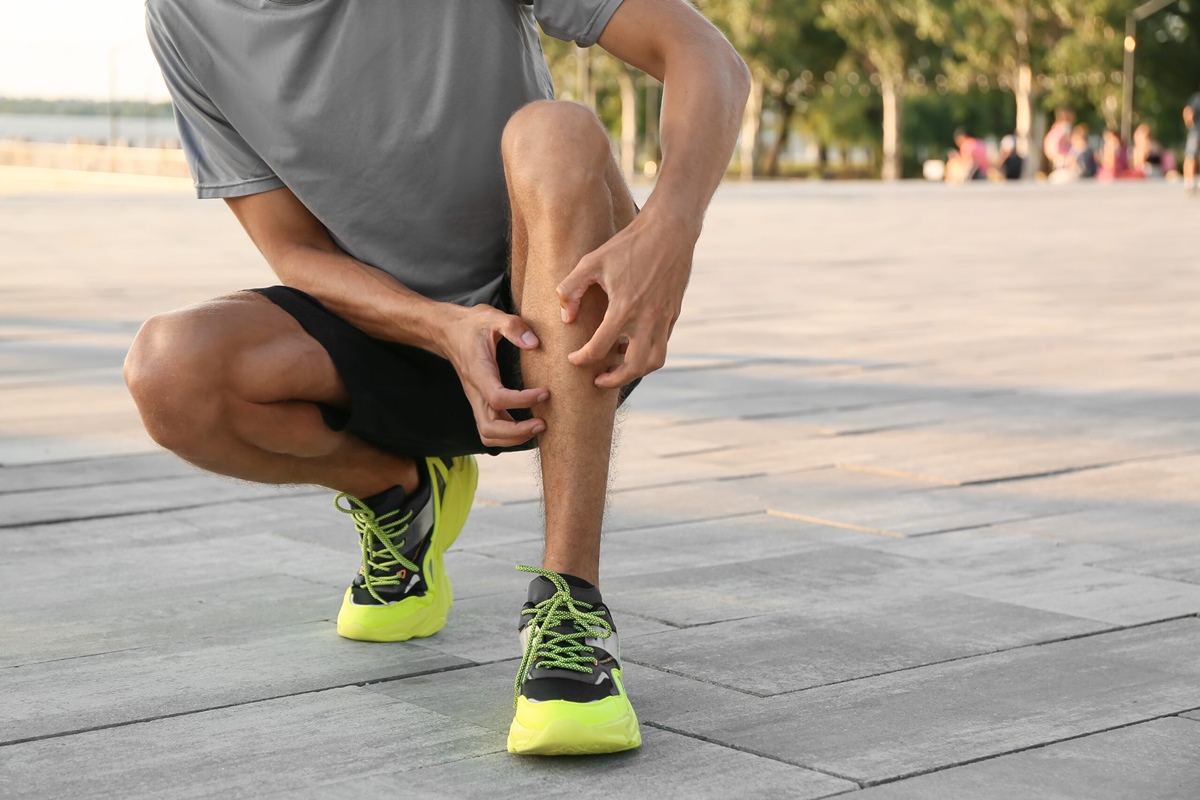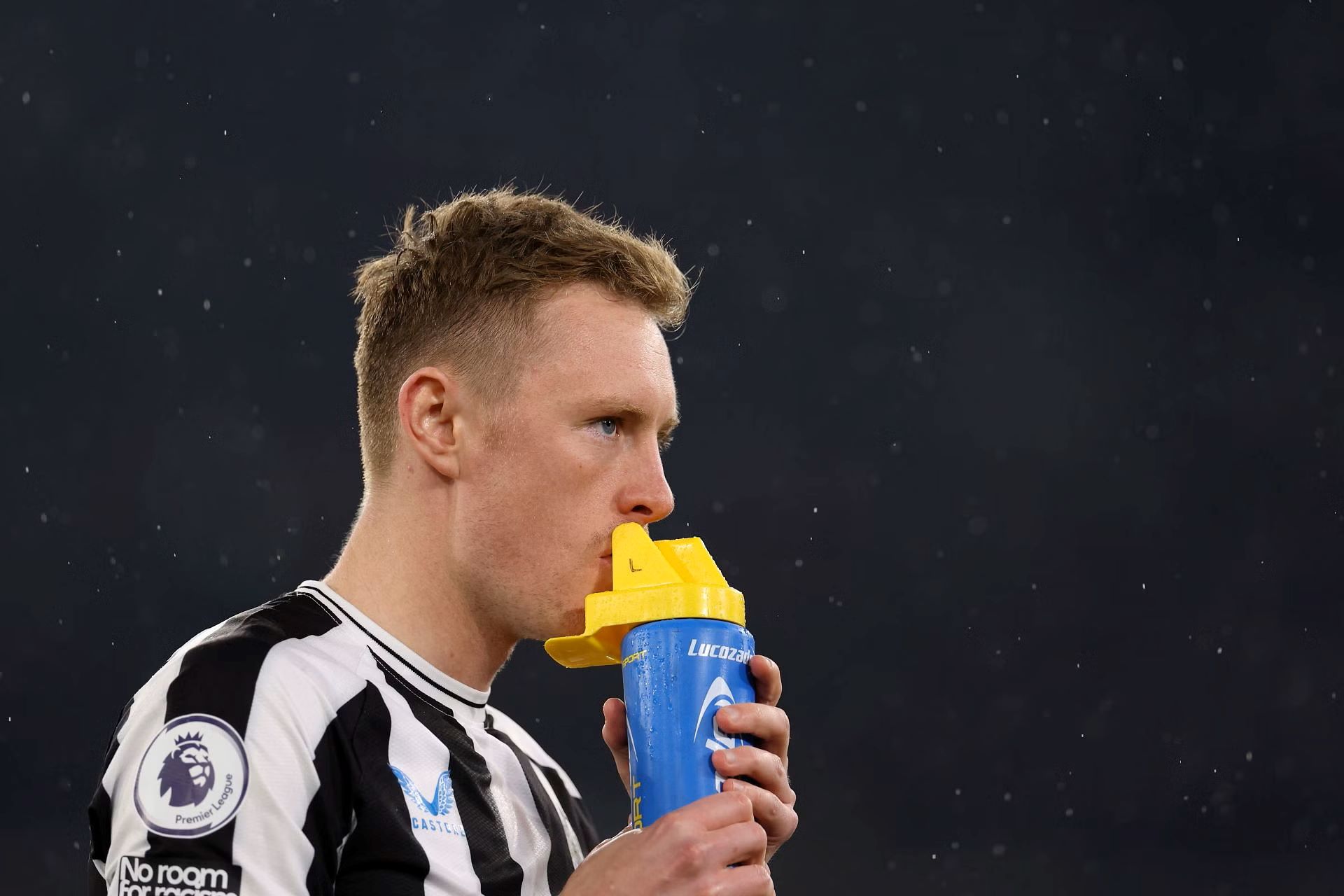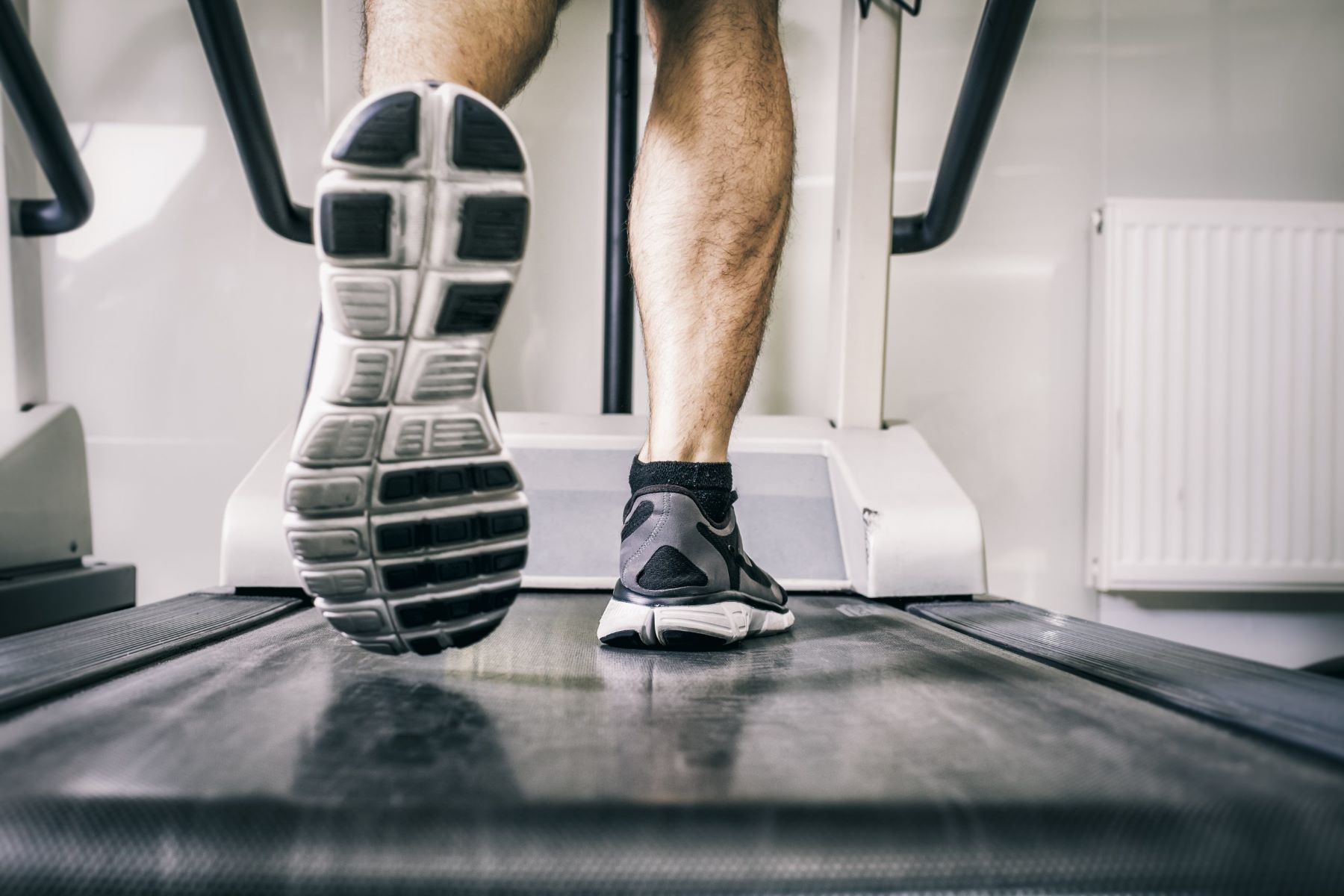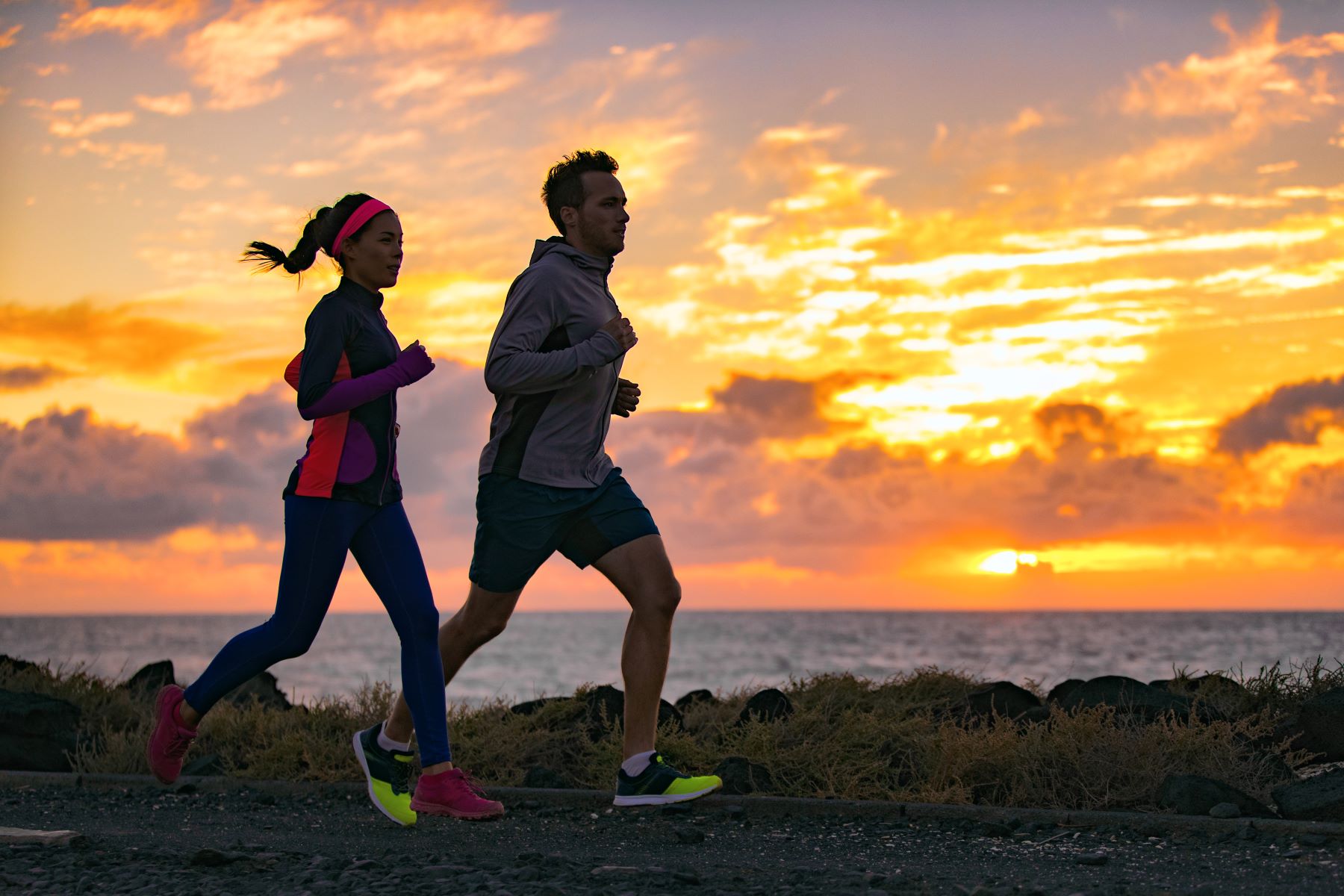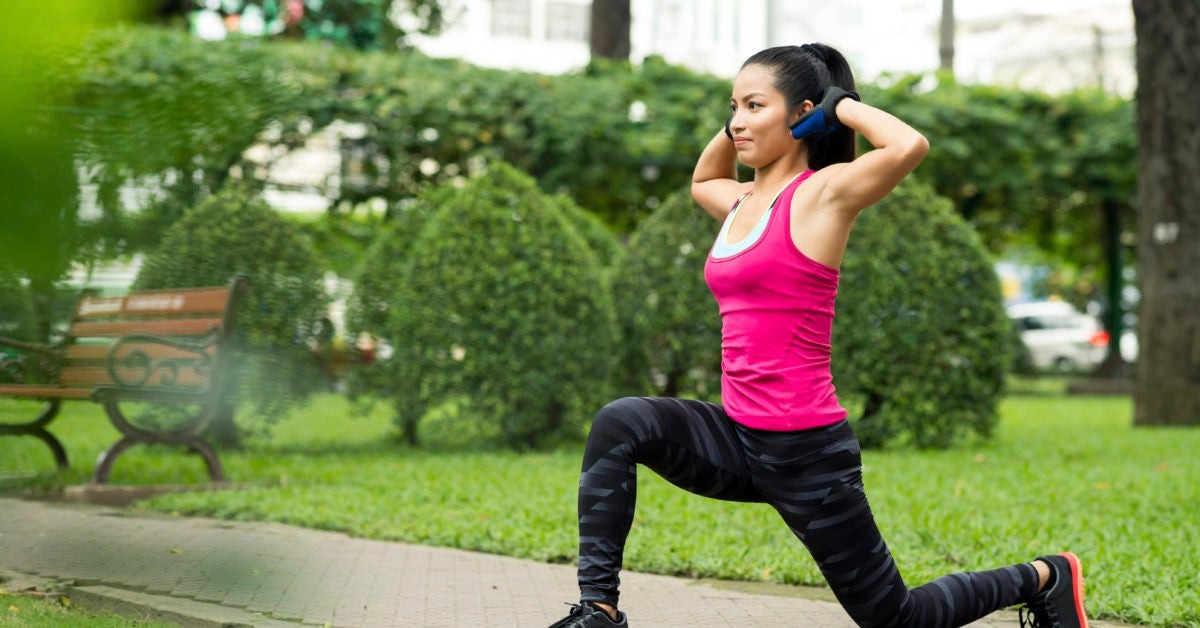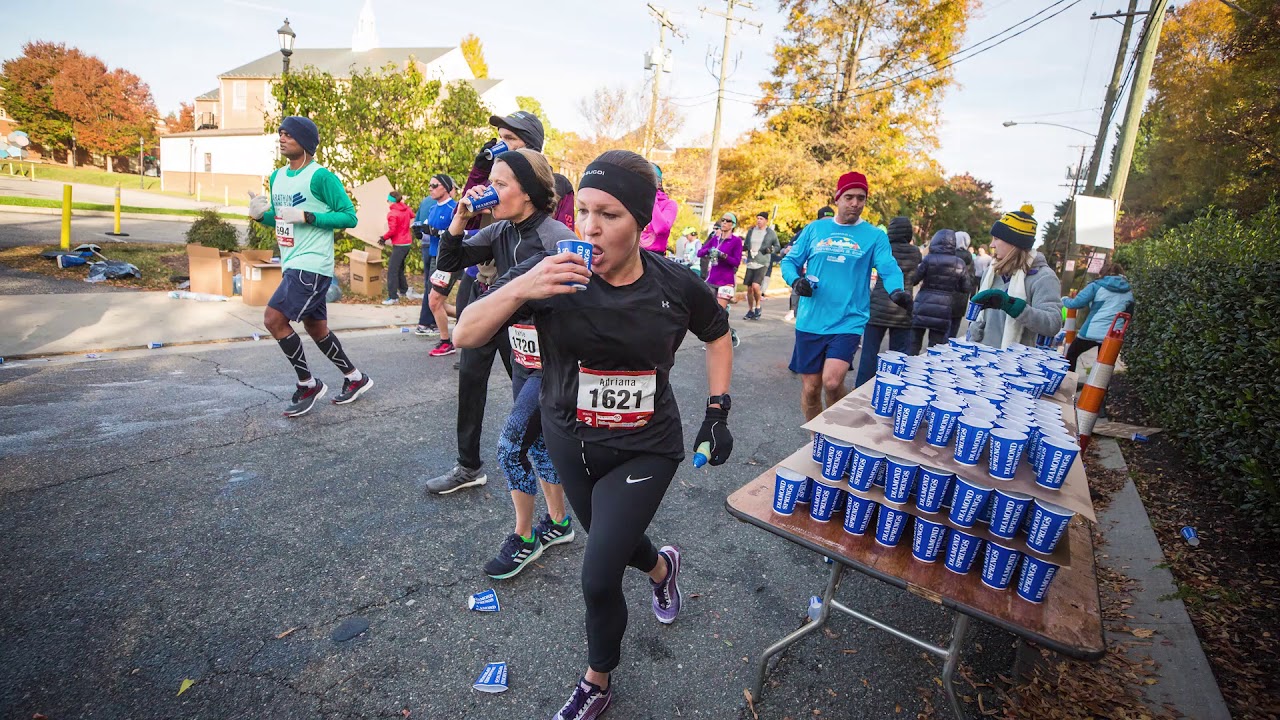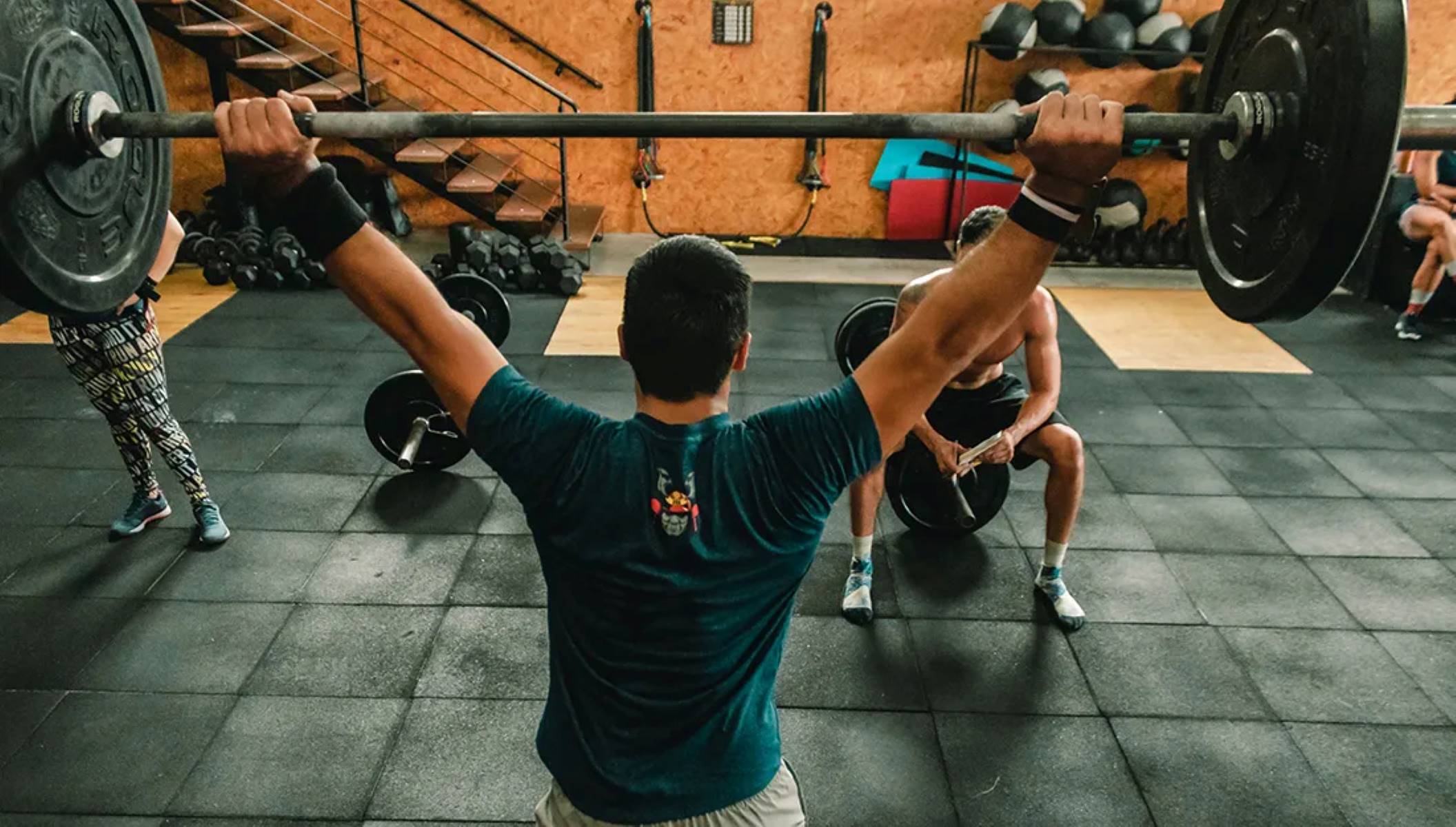Home>Misc>Featured>What Is The Effect Of Heat And Humidity On Athletic Performance
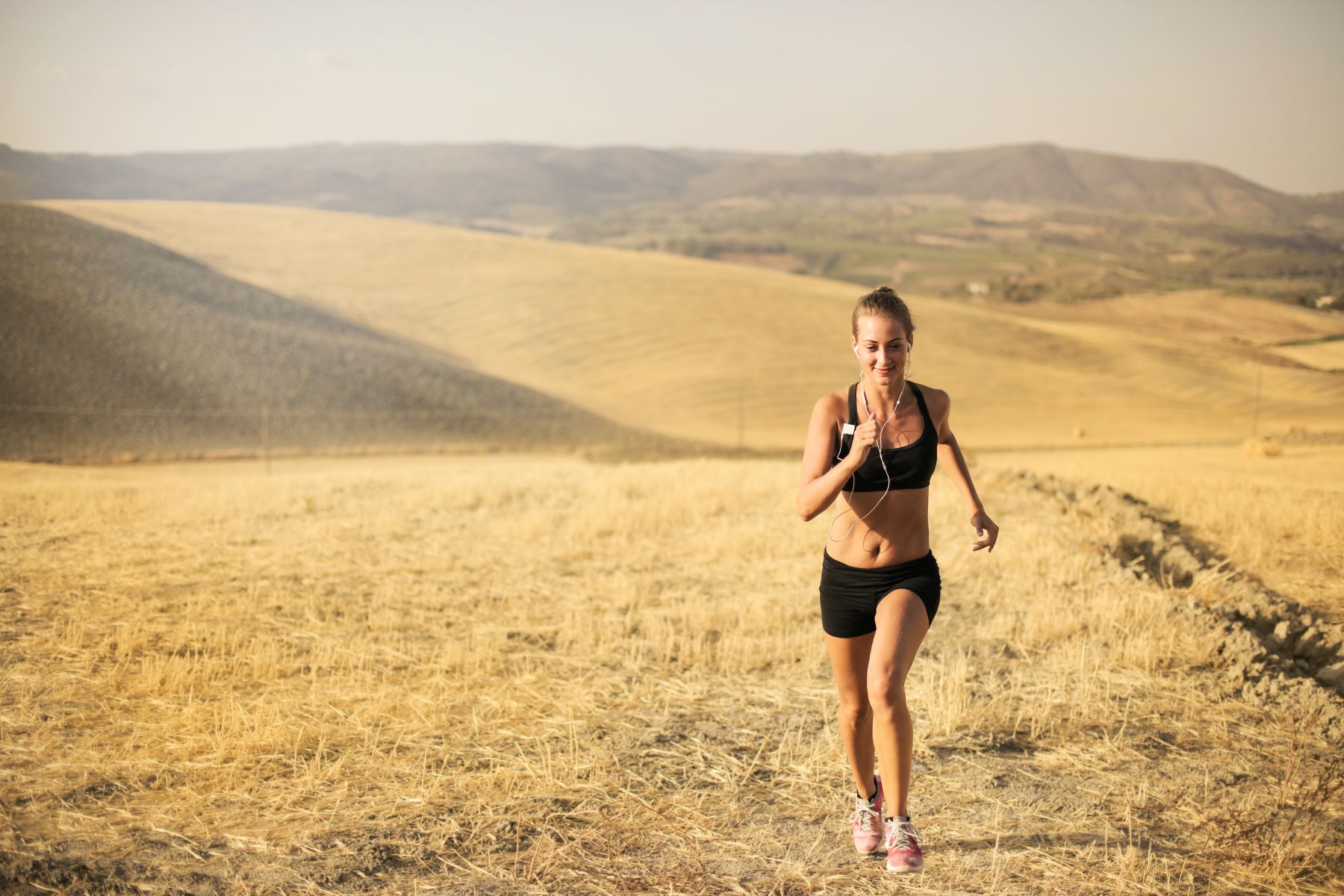

Featured
What Is The Effect Of Heat And Humidity On Athletic Performance
Modified: August 21, 2023
Discover the featured article on the effect of heat and humidity on athletic performance. Learn how these factors can impact athletes and their results.
Introduction
As athletes strive to achieve peak performance, there are various factors that can either enhance or hinder their abilities. One such factor is the environment in which they compete. Specifically, the effect of heat and humidity on athletic performance is a crucial consideration for both professionals and amateurs alike.
It is well known that high temperatures and humidity levels can significantly impact the human body. Athletes are particularly susceptible to the effects of these environmental conditions due to the physical demands placed on their bodies during training and competition.
While exercising, the body generates heat, and sweat is produced as a natural cooling mechanism. However, in hot and humid conditions, the body’s ability to dissipate heat is compromised, leading to a range of physiological responses that can detrimentally affect athletic performance.
In this article, we will explore the relationship between heat and humidity, and the various ways in which they can impact an athlete’s performance. We will delve into the physiological changes that occur in response to increased temperatures and humidity levels, and examine the potential consequences, such as dehydration, fatigue, and even heat-related illnesses and injuries.
Furthermore, we will discuss several strategies that athletes can employ to mitigate the effects of heat and humidity on their performance. These strategies include proper hydration techniques, heat acclimatization protocols, and cooling techniques that can help maintain body temperature within a safe and optimal range.
By understanding the complexities of how heat and humidity affect the body, athletes can take proactive measures to optimize their performance and reduce the risk of heat-related complications. So, let’s dive into the fascinating world of heat, humidity, and athletic performance and discover how athletes can overcome these challenges to reach their full potential.
The Relationship Between Heat and Humidity
Heat and humidity are closely interconnected and play a significant role in determining the environmental conditions that athletes must contend with during training and competition. While the terms “heat” and “humidity” are often used interchangeably, they are distinct factors that contribute to the overall perception of environmental discomfort.
Heat refers to the temperature of the surrounding air, whether it’s generated by the sun, artificial sources, or metabolic processes within the body. On the other hand, humidity measures the amount of moisture in the air, indicating the level of water vapor present.
Humidity directly affects the body’s ability to cool down through sweat evaporation. As humidity levels rise, the air becomes saturated with moisture, hindering the evaporation of sweat from the skin. This barrier to sweat evaporation reduces the body’s natural cooling mechanism, making it harder for athletes to regulate their internal body temperature.
When the combined effect of high temperature and humidity occurs, the perceived heat stress on the body intensifies. This is due to the decreased efficiency of evaporative cooling, leading to a higher risk of overheating and heat-related complications.
Furthermore, the body’s perception of temperature is influenced by the heat index, which takes into account both the air temperature and humidity level. The heat index provides a more accurate representation of how hot it feels to the human body. For example, a temperature of 90°F (32°C) combined with 80% humidity can feel substantially hotter and more uncomfortable than the same temperature with lower humidity.
It is important for athletes to monitor both temperature and humidity levels when considering their performance and well-being. By understanding the relationship between heat and humidity, athletes can make informed decisions about their training and competition schedules, adjusting them to periods where the environmental conditions are less demanding.
In the next sections, we will explore the physiological impact of heat and humidity on athletes, providing insights into the specific changes that occur within the body and how they can negatively affect performance.
Physiological Impact of Heat and Humidity on Athletes
When exposed to high temperatures and humidity, the human body undergoes a series of physiological changes in an attempt to adapt and regulate its internal temperature. However, these changes can have adverse effects on an athlete’s performance and overall well-being.
One of the primary physiological impacts of heat and humidity on athletes is the increased body temperature. As the body engages in physical activity, it generates heat through metabolic processes. In normal conditions, this excess heat is dissipated through sweat evaporation, helping to maintain a stable body temperature. However, in hot and humid environments, sweating becomes less effective due to the reduced evaporation rate, which compromises the body’s ability to cool down efficiently.
This rise in body temperature can have several negative consequences for athletes. Firstly, it increases the risk of dehydration. As the body sweats to cool down, it loses valuable fluids and electrolytes. If these lost fluids are not replenished adequately, it can lead to dehydration, which negatively affects physical and cognitive performance.
Moreover, the increased body temperature can lead to fatigue and decreased performance. When the body is exposed to prolonged periods of heat and humidity, there is a greater strain on the cardiovascular system as it works harder to dissipate heat and maintain blood flow to vital organs. This increased cardiovascular demand can lead to a reduction in oxygen delivery to muscles, causing early fatigue and diminished athletic performance.
Heat and humidity also impact the body’s ability to thermoregulate, or regulate its internal temperature. Excessive heat can disrupt the body’s natural cooling mechanisms, leading to heat-related illnesses such as heat exhaustion or even heatstroke. These conditions can be life-threatening if not promptly addressed.
Furthermore, the physiological strain caused by heat and humidity can have an impact on an athlete’s mental state. Increased body temperature and dehydration can affect cognitive function, leading to impaired decision-making, decreased focus, and reduced reaction times.
It is crucial for athletes to be aware of these physiological impacts and take appropriate measures to mitigate them. In the following sections, we will explore various strategies that athletes can employ to combat the effects of heat and humidity, allowing them to optimize their performance and stay safe.
Increased Body Temperature
One of the significant physiological impacts of heat and humidity on athletes is the increase in body temperature. When athletes engage in physical activity, their metabolic processes generate heat. Normally, this excess heat is dissipated through sweat evaporation, helping to regulate body temperature. However, in hot and humid environments, this natural cooling mechanism becomes compromised, resulting in a rise in body temperature.
As body temperature increases, various physiological responses occur. One of the most notable changes is an increase in sweating. Sweating is the body’s way of cooling down, as the evaporation of sweat helps dissipate heat from the skin’s surface. However, in humid conditions, the high moisture content in the air slows down the sweat evaporation process, reducing its cooling effect.
With reduced evaporation rates, athletes experience higher levels of sweat dripping from their bodies, but it does not lead to effective cooling. This can lead to feelings of discomfort and heaviness, as well as wet clothing and equipment. The accumulation of sweat on the skin can also hinder heat dissipation, ultimately impacting an athlete’s ability to perform at their best.
Additionally, an increase in body temperature can have detrimental effects on cardiovascular function. The heart has to work harder to pump blood to the skin’s surface for heat dissipation, while still delivering oxygen and nutrients to the working muscles. The increased cardiovascular demand can lead to higher heart rates and higher levels of perceived exertion. This increased strain on the cardiovascular system can contribute to premature fatigue during physical activity.
Moreover, elevated body temperature can affect muscle function. As the body tries to maintain its temperature within a safe range, blood is diverted to the skin to regulate heat, which may reduce blood flow to the muscles. This reduction in blood flow can negatively impact muscle performance and result in reduced power output, decreased speed, and impaired muscle endurance.
It is essential for athletes to monitor their body temperature during exercise in hot and humid conditions. Regular breaks and adequate hydration can help manage the body’s temperature by allowing for cooling and replenishment of lost fluids. Additionally, wearing breathable and moisture-wicking clothing can help promote sweat evaporation and enhance comfort during physical activity.
Understanding the impact of increased body temperature is crucial for athletes to make informed decisions about their training and competition schedules. By being mindful of the environmental conditions and employing appropriate strategies to manage body temperature, athletes can optimize their performance and reduce the risk of heat-related complications.
Dehydration
Dehydration is a significant concern for athletes in hot and humid environments. When the body is exposed to high temperatures and humidity levels, it sweats to regulate its temperature. This sweating process leads to fluid loss, which, if not replenished adequately, can result in dehydration.
Dehydration occurs when the body loses more fluids than it takes in. As an athlete sweats, they not only lose water but also essential electrolytes such as sodium, potassium, and magnesium. These electrolytes play a critical role in maintaining proper muscle and nerve function, as well as fluid balance within the body.
When an athlete becomes dehydrated, several negative effects can impact their performance. Firstly, dehydration impairs cardiovascular function. With a decrease in blood volume due to fluid loss, the heart has to work harder to pump blood. This increased workload can lead to higher heart rates and reduced cardiac output, resulting in decreased exercise capacity and increased fatigue.
Furthermore, dehydration affects thermoregulation. Sweating is a crucial mechanism for dissipating heat from the body, and when an individual is dehydrated, the efficiency of this process is compromised. As a result, body temperature can rise rapidly, increasing the risk of heat-related illnesses such as heat exhaustion or heatstroke.
Dehydration also affects cognitive function. Studies have shown that even mild dehydration can impair cognitive performance, impacting concentration, alertness, and decision-making abilities. This can be particularly detrimental for athletes who require quick thinking and precise decision-making during competitions.
Recognizing the signs of dehydration is crucial for athletes to address it promptly. These signs include increased thirst, dry mouth, dark-colored urine, fatigue, dizziness, and reduced urine output. It is essential for athletes to hydrate effectively before, during, and after physical activity in hot and humid conditions to prevent dehydration.
Proper hydration strategies involve drinking fluids that contain electrolytes to replenish what is lost through sweat. Sports drinks or electrolyte-enhanced water can be beneficial for maintaining fluid and electrolyte balance. Additionally, athletes should aim to consume fluids at regular intervals and according to their sweat rates.
By staying adequately hydrated, athletes can ensure optimal performance, improve cardiovascular function, enhance thermoregulation, and support cognitive function. Prioritizing hydration is vital for athletes competing in hot and humid conditions, as it can help prevent dehydration and its detrimental effects on both physical and cognitive abilities.
Decreased Performance and Fatigue
When athletes are exposed to high temperatures and humidity, their performance can be significantly impacted due to increased fatigue and decreased physical capacity. These adverse effects can have a profound influence on an athlete’s ability to perform at their best.
One of the primary reasons for decreased performance in hot and humid conditions is the increased physiological strain on the body. As the air temperature rises, the body has to work harder to regulate its internal temperature and dissipate heat. This increased effort puts a greater demand on the cardiovascular system, leading to higher heart rates and elevated levels of perceived exertion.
The body’s ability to deliver oxygen to the muscles is compromised under these environmental stressors. The increased demand for blood flow to the skin for cooling purposes reduces the amount of oxygen-rich blood available to the working muscles. This reduction in oxygen delivery can lead to early onset of fatigue, decreased muscle endurance, and a decline in overall physical performance.
Moreover, the combination of heat and humidity exacerbates the effects of dehydration. When athletes are dehydrated, their blood volume decreases, making it more difficult for the heart to pump blood efficiently. This reduction in blood volume impairs circulation and compromises oxygen delivery to the muscles, resulting in reduced power output and decreased athletic performance.
The thermoregulatory strain caused by heat and humidity also contributes to fatigue. As the body tries to dissipate heat, it diverts energy resources away from muscle performance. The energy that would typically be used for muscular contractions is redirected towards maintaining homeostasis and cooling mechanisms, ultimately leading to decreased muscle power and endurance.
In addition to the physical effects, heat and humidity can also impair cognitive function and decision-making abilities, further impacting performance. Studies have shown that increased body temperature can have detrimental effects on cognitive performance, including decreased attention span, impaired memory, and diminished problem-solving skills. This cognitive fatigue can be especially detrimental in sports that require quick thinking and precise decision-making.
To mitigate the impacts of decreased performance and fatigue in hot and humid conditions, athletes should take proactive measures. It is crucial to plan training and competition schedules during cooler periods of the day or in more favorable environments, if possible. Implementing proper hydration strategies is essential to prevent dehydration and maintain optimal performance. Additionally, incorporating adequate rest and recovery periods can help offset the cumulative effects of heat and humidity.
By understanding the challenges posed by decreased performance and fatigue in hot and humid conditions, athletes can make adjustments to their training and competition strategies to optimize their performance and minimize the negative impacts of these environmental factors.
Heat-Related Illnesses and Injuries
Exercising in high temperatures and humidity can put athletes at risk of developing heat-related illnesses and injuries. These conditions can range from mild heat exhaustion to severe heatstroke, and they can have serious implications for an athlete’s health and performance if not promptly recognized and treated.
Heat exhaustion is a common heat-related illness that occurs when the body is unable to cool down adequately. Symptoms include profuse sweating, rapid heartbeat, dizziness, nausea, headache, and weakness. If left untreated, heat exhaustion can progress to heatstroke, which is a life-threatening condition. Heatstroke is characterized by a dangerously high body temperature (above 104°F or 40°C) and can lead to organ dysfunction, seizures, and even coma.
Dehydration is a significant risk factor for heat-related illnesses and injuries. When athletes become dehydrated, they lose important electrolytes, such as sodium and potassium, which are essential for proper muscle and nerve function. Electrolyte imbalances can contribute to muscle cramps, weakness, and impaired cognitive function, all of which increase the risk of accidents and injuries.
Furthermore, heat-related illnesses and injuries can affect vital organs, such as the heart and kidneys. Excessive heat exposure can place a significant strain on the cardiovascular system, leading to an increased risk of cardiovascular events, including heat-induced heart conditions and heat-related myocardial infarction. The kidneys may also be adversely affected, as dehydration can compromise their ability to filter waste products and maintain fluid balance within the body.
Athletes participating in endurance events, such as marathons or outdoor competitions lasting several hours, are particularly susceptible to heat-related illnesses and injuries. The prolonged exposure to high temperatures and humidity, coupled with intense physical exertion, significantly increases the risk of developing these conditions.
It is crucial for athletes and their support teams to be vigilant about the signs and symptoms of heat-related illnesses and injuries. Prompt recognition and treatment are essential for a successful recovery. Athletes should seek shade or a cooler environment, hydrate with electrolyte-rich fluids, and apply cooling techniques to regulate their body temperature. In severe cases, immediate medical attention should be sought.
Prevention is also key in minimizing the risk of heat-related illnesses and injuries. Athletes should acclimatize gradually to hot and humid conditions, allowing their bodies to adapt to the environmental stressors. Hydration should be a top priority, with athletes consuming adequate fluids before, during, and after exercise. Wearing appropriate clothing that allows for ventilation and utilizing cooling methods, such as ice towels or misting fans, can also help mitigate the risk of heat-related complications.
By being proactive in recognizing the signs, taking preventive measures, and promptly addressing any heat-related illnesses or injuries, athletes can safeguard their health, optimize performance, and continue to enjoy the benefits of their chosen sport.
Strategies to Combat Heat and Humidity During Athletic Performance
Athletes competing in hot and humid conditions face unique challenges in maintaining optimal performance and ensuring their safety. However, with the right strategies and precautions, athletes can effectively combat the impact of heat and humidity on their athletic performance.
Hydration Guidelines: Proper hydration is essential for athletes to counteract the fluid loss that occurs through sweating. Athletes should consume fluids before, during, and after exercise to replenish fluids and prevent dehydration. Hydration guidelines recommend drinking fluids at regular intervals and monitoring urine color as an indicator of hydration status. It is also important to note that water alone may not be sufficient. Sports drinks or electrolyte-enhanced beverages can help replenish lost electrolytes and enhance hydration.
Heat Acclimatization: Gradual exposure to hot and humid conditions allows the body to adapt and become more efficient at dissipating heat. Athletes should gradually increase their training duration and intensity in these conditions to optimize their heat acclimatization. This process typically takes around 10-14 days, during which athletes should monitor their body’s response and adjust their training accordingly.
Cooling Techniques: Implementing strategies to cool the body during exercise can be highly beneficial in combating the effects of heat and humidity. Some effective cooling techniques include applying cold towels or ice packs to the body, utilizing misting fans or cooling vests, and taking frequent breaks in shaded areas. These techniques help to lower body temperature, reduce thermal strain, and enhance overall comfort during physical activity.
Adequate Clothing: Wearing appropriate clothing can make a significant difference in heat and humidity management. Athletes should opt for moisture-wicking and breathable fabrics that allow sweat to evaporate more efficiently, promoting better cooling. Loose-fitting and light-colored clothing helps to reflect sunlight and reduce heat absorption. Additionally, wearing a hat or visor can provide shade and prevent direct exposure to the sun.
Training and Competition Schedule: Athletes should carefully plan their training and competition schedules, taking into account the times of day when temperatures and humidity levels are lower. Early morning or evening sessions are often cooler and offer more favorable conditions for performance. Indoor training facilities can also provide a controlled environment with temperature regulation, minimizing the impact of external weather conditions.
Monitoring Weather Conditions: Staying informed about the weather forecast is crucial for athletes. By knowing the expected temperature and humidity levels, as well as any heat advisories or warnings, athletes can make informed decisions about whether to modify their training plans or adjust their intensity and duration of exercise accordingly.
Implementing these strategies will aid athletes in combatting the challenges posed by heat and humidity during their athletic performance. By staying hydrated, acclimatizing appropriately, utilizing cooling techniques, wearing suitable clothing, and being mindful of the training schedule and weather conditions, athletes can optimize their performance, mitigate the risk of heat-related complications, and maintain their overall well-being.
Hydration Guidelines
Proper hydration is of utmost importance for athletes performing in hot and humid conditions. Water is vital for maintaining normal bodily functions and regulating body temperature. When individuals engage in physical activity, especially in high temperatures, they are at an increased risk of dehydration due to excessive sweating and fluid loss.
Hydration guidelines suggest that athletes should prioritize fluid intake before, during, and after exercise to replenish the fluids lost through sweat. It is crucial to consume fluids regularly rather than waiting until you feel thirsty, as thirst is not always an accurate indicator of hydration status.
The amount of fluid an athlete needs varies depending on factors such as body weight, intensity and duration of exercise, and environmental conditions. As a general guideline, consuming 500-600ml (17-20oz) of fluid 2-3 hours before exercise can help ensure initial hydration. During exercise, aim to drink 150-350ml (5-12oz) of fluid every 15-20 minutes, or as needed, to replace sweat losses and maintain hydration levels.
It is important to note that water alone may not always be sufficient to replenish electrolytes lost through sweat, especially during prolonged exercise. Electrolytes such as sodium, potassium, and magnesium are crucial for maintaining proper muscle and nerve function. Sports drinks or electrolyte-enhanced beverages can help replace these electrolytes and enhance hydration.
Monitoring urine color is a useful way to assess hydration status. Aim for a light, pale yellow color, which indicates adequate hydration. Dark-colored urine may signal dehydration, and immediate attention should be given to rehydrating.
Individuals with significant sweat losses or those engaging in intense physical activity for extended periods may benefit from personalized hydration strategies. Sweat rate testing can help determine an individual’s fluid requirements during exercise by measuring pre and post-exercise body weight and accounting for fluid intake and urine output.
In addition to staying hydrated during exercise, athletes must also prioritize post-exercise rehydration. Consuming fluids containing both water and electrolytes within 30-60 minutes following exercise is recommended to replace lost fluids and aid in recovery.
It is crucial to be aware of the signs of dehydration, which include increased thirst, dry mouth, dark-colored urine, fatigue, dizziness, and reduced urine output. If any of these signs are present, immediate action should be taken to rehydrate.
Ultimately, understanding and following proper hydration guidelines are essential for athletes performing in hot and humid conditions. Adequate hydration supports optimal performance, helps maintain body temperature, and reduces the risk of heat-related illnesses and injuries. By staying hydrated and incorporating electrolyte replacement when necessary, athletes can optimize their performance and well-being in challenging environmental conditions.
Heat Acclimatization
Heat acclimatization is a process that involves gradually exposing the body to hot and humid conditions to improve its ability to cope with the environmental stressors. By allowing the body to adapt to the heat, athletes can enhance their performance and reduce the risk of heat-related complications.
The process of heat acclimatization typically takes around 10-14 days, but individual responses may vary. During this period, athletes progressively increase their training duration and intensity in hot and humid conditions. The goal is to initiate physiological adaptations that improve the body’s ability to regulate temperature and function optimally under these conditions.
Heat acclimatization triggers several beneficial adaptations within the body. One of the primary changes is an increase in plasma volume. This expansion of the fluid component of the blood makes it easier for the body to deliver oxygen to the muscles and dissipate heat through sweating. The increased plasma volume also helps to maintain blood pressure and cardiovascular stability during exercise.
Another adaptation is an earlier onset and increased sweat rate. Through heat acclimatization, the body becomes more efficient at producing and releasing sweat. This allows for more effective cooling as sweat evaporates from the skin, promoting heat loss. Additionally, acclimatization leads to a decreased concentration of sodium in sweat, which can help prevent excessive electrolyte loss during prolonged exercise.
Heat acclimatization also stimulates changes at the cellular level. The body’s cellular machinery becomes better equipped to handle the stress associated with heat and humidity. This includes improved heat shock protein production, which helps protect cells from heat-induced damage.
It is important to note that heat acclimatization should be approached gradually and carefully. Athletes should start with shorter durations of exercise in hot and humid conditions and gradually increase both duration and intensity. Monitoring one’s physical response and adjusting the training accordingly is crucial to prevent overexertion and heat-related illnesses.
Heat acclimatization is not a one-time process but rather an ongoing adaptation. If an athlete takes a break from exposure to hot and humid conditions, the adaptations may diminish, and the process may need to be repeated to regain the acclimatization benefits.
Heat acclimatization is particularly critical for athletes who compete or train in extreme environments or participate in outdoor activities during hot seasons. By allowing the body to adapt and better handle the challenges posed by heat and humidity, athletes can perform at their best while minimizing the risk of heat-related complications.
Cooling Techniques
Combatting the effects of heat and humidity during athletic performance involves the implementation of effective cooling techniques. These strategies help athletes regulate their body temperature, reduce thermal strain, and enhance overall comfort during physical activity in hot and humid conditions.
One effective cooling technique is the use of cold towels or ice packs. Applying a cold towel or placing ice packs on the neck, forehead, or wrists can quickly lower the body’s surface temperature. These cooling measures help to dissipate heat and provide immediate relief from the discomfort associated with high temperatures.
Misting fans or handheld misting devices are also effective in cooling the body during exercise. The fine mist evaporates off the skin, providing a cooling effect. This technique can be particularly useful in outdoor sports where access to shade or natural cooling mechanisms is limited.
Wearing cooling vests or garments designed with special cooling materials is another effective strategy. These garments use advanced technology to wick away moisture and aid in heat evaporation from the body. Cooling vests can be pre-cooled before use, and they can help maintain a stable body temperature during exercise.
Another commonly used cooling technique is the consumption of cold fluids or ice slushies during exercise. The ingestion of cold fluids helps lower core body temperature and provides internal cooling. Sports drinks or electrolyte-enhanced beverages can be particularly beneficial, as they not only provide hydration but also replace important electrolytes lost through sweat.
Taking regular breaks in shaded areas or cooler environments is crucial for cooling down during exercise. These breaks allow the body to dissipate heat and recover, reducing the risk of overheating and heat-related complications. Resting in a cool, shaded area also helps alleviate the physical and mental stress associated with hot and humid conditions.
Acclimatizing to the heat is another essential strategy. Gradual exposure to hot and humid conditions over a period of several days allows the body to adapt and better tolerate the environmental stressors. Consistent exposure to heat and humidity during training can facilitate improved heat dissipation and enhance the body’s ability to regulate core temperature.
Individuals can also make use of general cooling techniques, such as taking cool showers before exercise or utilizing cold compresses on pulse points, such as the wrists or temples, to help lower body temperature before starting physical activity.
It is essential to tailor cooling techniques based on individual preferences and the specific demands of the sport or activity. What works for one athlete may not work for another. Experimenting with different methods and finding the most effective cooling techniques for optimal performance is crucial.
By incorporating appropriate cooling techniques, athletes can manage the effects of heat and humidity, maintain a lower body temperature, and reduce the risk of heat-related illnesses and fatigue. The judicious use of these cooling strategies can greatly enhance athletic performance and ensure a safer and more comfortable experience in hot and humid environments.
Conclusion
When athletes engage in physical activity in hot and humid conditions, they face unique challenges that can impact their performance and well-being. The relationship between heat and humidity directly affects the body’s ability to regulate temperature, leading to physiological changes and potential negative outcomes.
The increased body temperature from heat and humidity can cause dehydration, fatigue, and decreased performance. The strain on the cardiovascular system, impaired thermoregulation, and compromised cognitive function further add to the hurdles athletes must surmount.
To combat the effects of heat and humidity, athletes can implement various strategies. Hydration guidelines outline the importance of regular fluid intake, ensuring proper replenishment of fluids and electrolytes lost through sweat. Heat acclimatization allows the body to adapt gradually to hot and humid conditions, enhancing its ability to cope with the environmental stressors.
Cooling techniques, such as using cold towels, misting fans, and cooling garments, help to lower body temperature and provide immediate relief. Taking breaks in shaded areas, incorporating rest periods, and utilizing general cooling methods aid in managing thermal strain.
Understanding heat-related illnesses and injuries is crucial for athletes, as prompt recognition and treatment can prevent more severe complications. Heat exhaustion, heatstroke, and dehydration are potential risks that athletes must be aware of and take necessary precautions to avoid.
In conclusion, athletes venturing into hot and humid conditions must prioritize their well-being and performance by applying appropriate strategies. Hydration, heat acclimatization, cooling techniques, and preventive measures against heat-related illnesses are essential components of an athlete’s toolkit for success. By embracing these strategies and adapting them to their individual needs, athletes can optimize their performance and stay safe while achieving their athletic goals even in the most challenging environmental conditions.
